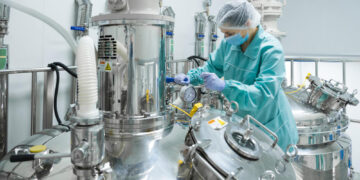Many factors affect the global fertilizer market. In this blog, we look at some insights about the industry from Advanced Nutrients Founder and CEO, Michael Straumietis.
In the U.S., fertilizer prices are still the top concern on farmers’ minds throughout the 2022 growing season, and for a good reason. Many farmers have reported fertilizer price increases of more than 300 percent, with highly unpredictable delivery times.
This is not the first-time farmers have struggled with prices and delivery times.
The Reasons for the Price Surge
Over a decade ago, in April 2008, nitrogen prices rose by over 30 percent, phosphate prices by over 90 percent, and potash prices by 100 percent. Prices remained this high throughout 2009 before dropping back to pre-2007 numbers by the end of the year. Experts connected the price surge to strong domestic and global demand, low fertilizer inventories, and the inability of the fertilizer industry in the U.S. to adjust its production levels.
Today, these same factors, in addition to several others, are affecting prices once again.
All the main nutrients used in the production of the primary row crops in the U.S., such as nitrogen, phosphorus, and potash, have all experienced a spike in prices.
Mike Straumietis notes that fertilizer is a popular and in-demand global commodity and can be affected by various market factors beyond the reach and control of producers.
The Impact of Exports
Around 44 percent of the total fertilizer materials are exported. This is important to note since export has a huge impact on fertilizer prices because the production of fertilizer is not only influenced by what is occurring in the place it is produced or its cost of production but also by the demand for fertilizer products from other countries, and shipping rates.
A third of fertilizer demand worldwide is driven by six major crops: corn, wheat, rice, vegetables, fruits, and soybeans. As one of the world’s largest producers of corn, soybeans, and wheat, the U.S. is also a large consumer of fertilizer. However, with the development and advancement of technologies for on-farm products, the need and use of fertilizer in the country has gone down, even with the planting of crops increasing.
Nutrients Consumption
During the 1980 to 1981 fiscal year, the U.S. used a staggering 23.7 million tons of nutrients. However, today, over 40 years later, the U.S. has pulled back due to the adoption of the application of precision fertilizer. The most recent data available, collected from 2015 to 2016, showed that nutrient use in the country was at 22.1 million nutrient tons.
It was also found that corn is at the top of these crops, representing almost half (49 percent) of the share of U.S. nutrient usage. Wheat accounts for about 11 percent, with soybeans representing around 10 percent. Those three crops – corn, wheat, and soybeans – account for an estimated 70 percent of U.S. fertilizer consumption, based on information Mike Straumietis has seen.
A Way to Meet Demand
In contrast to the U.S. reducing its consumption of global nutrient use, other countries have increased their use of nutrients. In the 1960s, the U.S. had 25 percent of nutrient use worldwide. Today, however, the U.S. only accounts for 10 percent of global use, with American farmers accounting for only 2 percent of that share.
When it comes to fertilizer production, the U.S. is the third-largest contributor in the world. Despite this, the U.S. finds that it needs to import certain nutrients such as nitrogen and potash to meet demand completely. Mike Straumietis adds that this means suppliers and producers in the U.S. are still required to pay the price determined by the global market for fertilizer, production materials, shipping, and transportation.
Optimizing All Phases
Advanced Nutrients, the company Mike Straumietis founded and currently leads, has helped growers in more than 110 countries unlock their plants’ genetic potential via a growing system that optimizes all phases of the vegetative and bloom cycles to bring crops their true genetic potential. Mike Straumietis has invested millions of dollars in this first and only complete growing system of its kind with the aim of helping to solve food security issues.














